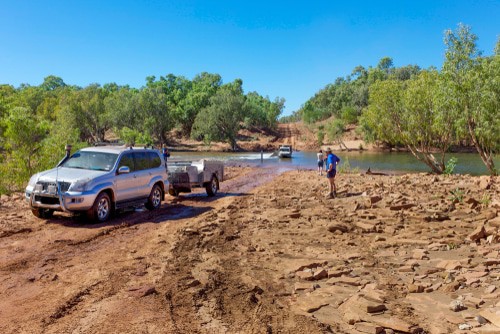How To Tackle A Water Crossing
Here are some vital tips to help you cross safely.
Know your vehicle
Before you head off on your adventure know the wading depth of your 4X4 and where your electrics are mounted and location of your air intake.
Cool your engine
Hot engines and cold water are a recipe for disaster, so before you plunge in stop and let your vehicle cool down first. Rapid changes in temperature can lead to issues such as ineffective breaks and impacts on the radiator.
Know what you’re dealing with
Before entering the water with your vehicle check out:
- How deep it is?
- How fast it is flowing?
- What’s underneath
- What is the best route?
- How you will need to prepare your rig?
Unless you are dealing with croc-infested waters, you can walk through to access.
Pick your line
Make a decision on where you will enter and exit the water and stick to it, making sure the line allows for the increased turning circle with a camper or caravan in tow.
Gear selection & speed
Keep a steady and constant speed and use a low-range gear. Low range will give you maximum torque to push through the water, and you’ll have more control over your revs and speed and avoid changing gear in the water, so not to stall halfway across.
Try to establish a pace that creates a bow wave. This is where you’re pushing a wall of water in front of you – you’re getting a build-up of water in front but at the back of the car, the water’s opening up.
If the engine does stall, try and start it up instantly, unless you think there could be water in the engine. In which case it would be advised not to restart the engine to avoid internal damage.
Prepare for the worst
It is best practice to treat every water crossing as if you’re going to get stuck halfway across so be prepared by getting your recovery gear out and hooked up ready to go.
Place any valuables and anything you don’t want to get wet up high in the vehicle and/or caravan/camper, and switch off any electrical accessories, such as fridges and inverters, to avoid the possibility of circuit damage
When you’re driving through the river, always have a downstream-facing window open, so that if the car fails and you have to get out, you can climb out through the window and get up on the roof.
Dry off
When you get out the other side of the river, make sure the car is dry before turning it off. Just leave the motor running or go for a drive for 10-15 minutes to dry everything out.




